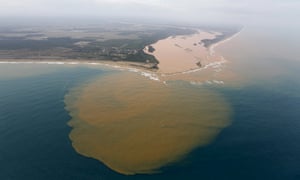1. World Leaders Gather in Paris For Climate Change Conference
On Monday, 150 world leaders will be in Paris for the United Nations climate change summit, also known as COP21. The goal of the summit is to achieve a legally binding agreement to keep global warming at a threshold. China, India, and the United States are the world's top three carbon-emitting countries. Read more...
To learn more about COP21 and the goals of the summit read here...
To learn more about COP21 and the goals of the summit read here...
-----------------------------------------------
2. Humpback Whales Solve a Big Problem for Wind Turbines
Any idea what wind turbines and whales have in common? Generally, nothing comes to mind. Believe it or not, wind turbine blade design may incorporate the aerodynamic properties of humpback whale flippers. Researchers at the Naval Academy have studied the movements of the humpbacks to emulate the angle of attack and lift properties. After testing prototypes in a wind tunnel, the engineering team determined that flippers with tubercles increased the amount of lift that can be generated. These principles can now be designed into turbine blades. Read more...
-----------------------------------------------
3. Rapid Plankton Growth in Ocean Seen as Sign of Carbon Dioxide Loading
This week, an article was published in the journal Science revealing that marine alga in the North Atlantic continues to thrive. A team of scientists from Johns Hopkins concluded that there has been a tenfold increase in the abundance of single-cell coccolithophores between 1965 and 2010. Coccolithophores are pale-shelled floating phytoplankton. The research suggests that the high carbon dioxide levels represent a major shift in ecosystem stability. Read more...
-----------------------------------------------
4. 337 Whales Dead in Massive Stranding Off Chile
 A total of 337 whales have been found beached along the coast of Patagonia, Chile. Most of these whales are Sei whales which can reach 60 feet long and weigh up to 100,000 pounds. Sei whales are an endangered species and little is known about their migrations and habitats. Scientists are unsure of the reason for the mass beaching but, have started to analyze the corpses for a possible root cause. Read more...
A total of 337 whales have been found beached along the coast of Patagonia, Chile. Most of these whales are Sei whales which can reach 60 feet long and weigh up to 100,000 pounds. Sei whales are an endangered species and little is known about their migrations and habitats. Scientists are unsure of the reason for the mass beaching but, have started to analyze the corpses for a possible root cause. Read more...
-----------------------------------------------
 On November 5th, the mine disaster in Rio Doce killed 12 people, wiped out communities, and is now impacting the oceans. The waste is expected to spread along 5.5 mile stretch of the coastline. This contamination will threaten many species in the area including the endangered leatherback turtle. Protective barriers have now been installed along the estuary of Rio Doce and the river mouths have been widened to ensure that the mud drifts out to sea as quickly as possible. Read more...
On November 5th, the mine disaster in Rio Doce killed 12 people, wiped out communities, and is now impacting the oceans. The waste is expected to spread along 5.5 mile stretch of the coastline. This contamination will threaten many species in the area including the endangered leatherback turtle. Protective barriers have now been installed along the estuary of Rio Doce and the river mouths have been widened to ensure that the mud drifts out to sea as quickly as possible. Read more...
-----------------------------------------------
6. Captivating Blue Dragon Sea Slug Washes Up in Australia
 The species pictured on the right is known as Glaucus atlanticus or the 'blue dragon'. The blue dragon is a small sea slug found floating along the surface in many oceans. This week one was found washed ashore in Australia. This unique species intentionally eats the man o' war's toxic stingers and can impart a nasty sting on any potential predators. Read more...
The species pictured on the right is known as Glaucus atlanticus or the 'blue dragon'. The blue dragon is a small sea slug found floating along the surface in many oceans. This week one was found washed ashore in Australia. This unique species intentionally eats the man o' war's toxic stingers and can impart a nasty sting on any potential predators. Read more...
-----------------------------------------------
7. The Mystery of Alaska's Sea Otter Deaths Continue to Baffle Scientists
This year, more than 250 sick or dead sea otters have turned up on Alaska beaches. This number has doubled from 2014. Based off of the symptoms, scientists believe that toxins from harmful algal blooms and bacterial infections may be contributing factors. Both the Alaska SeaLife Center and the US Fish and Wildlife Service have been working to understand the cause of increase in sea otter deaths. Read more...
-----------------------------------------------
Be sure to "LIKE" http://facebook.com/SeaSave to ensure our "Week in Review" is delivered to your newsfeed every Thursday.
Sea Save Foundation is committed to raising awareness of marine conservation. The Week in Review is a team effort produced by the Sea Save staff to provide a weekly summary of the latest in marine research, policy, and news.


